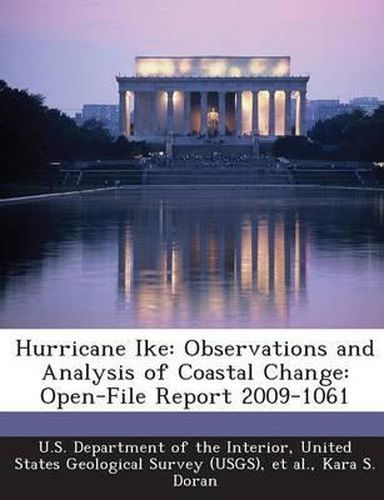Readings Newsletter
Become a Readings Member to make your shopping experience even easier.
Sign in or sign up for free!
You’re not far away from qualifying for FREE standard shipping within Australia
You’ve qualified for FREE standard shipping within Australia
The cart is loading…






Understanding storm-induced coastal change and forecasting these changes require knowledge of the physical processes associated with the storm and the geomorphology of the impacted coastline. The primary physical processes of interest are the wind field, storm surge, and wave climate. Not only does wind cause direct damage to structures along the coast, but it is ultimately responsible for much of the energy that is transferred to the ocean and expressed as storm surge, mean currents, and large waves. Waves and currents are the processes most responsible for moving sediments in the coastal zone during extreme storm events. Storm surge, the rise in water level due to the wind, barometric pressure, and other factors, allows both waves and currents to attack parts of the coast not normally exposed to those processes. Coastal geomorphology, including shapes of the shoreline, beaches, and dunes, is equally important to the coastal change observed during extreme storm events. Relevant geomorphic variables include sand dune elevation, beach width, shoreline position, sediment grain size, and foreshore beach slope. These variables, in addition to hydrodynamic processes, can be used to predict coastal vulnerability to storms The U.S. Geological Survey’s (USGS) National Assessment of Coastal Change Hazards Project (http: //coastal.er.usgs.gov/hurricanes), strives to provide hazard information to those interested in the Nation’s coastlines, including residents of coastal areas, government agencies responsible for coastal management, and coastal researchers. As part of the National Assessment, observations were collected to measure coastal changes associated with Hurricane Ike, which made landfall near Galveston, Texas, on September 13, 2008. Methods of observation included aerial photography and airborne topographic surveys. This report documents these data-collection efforts and presents qualitative and quantitative descriptions of hurricane-induced changes to the shoreline
$9.00 standard shipping within Australia
FREE standard shipping within Australia for orders over $100.00
Express & International shipping calculated at checkout
Understanding storm-induced coastal change and forecasting these changes require knowledge of the physical processes associated with the storm and the geomorphology of the impacted coastline. The primary physical processes of interest are the wind field, storm surge, and wave climate. Not only does wind cause direct damage to structures along the coast, but it is ultimately responsible for much of the energy that is transferred to the ocean and expressed as storm surge, mean currents, and large waves. Waves and currents are the processes most responsible for moving sediments in the coastal zone during extreme storm events. Storm surge, the rise in water level due to the wind, barometric pressure, and other factors, allows both waves and currents to attack parts of the coast not normally exposed to those processes. Coastal geomorphology, including shapes of the shoreline, beaches, and dunes, is equally important to the coastal change observed during extreme storm events. Relevant geomorphic variables include sand dune elevation, beach width, shoreline position, sediment grain size, and foreshore beach slope. These variables, in addition to hydrodynamic processes, can be used to predict coastal vulnerability to storms The U.S. Geological Survey’s (USGS) National Assessment of Coastal Change Hazards Project (http: //coastal.er.usgs.gov/hurricanes), strives to provide hazard information to those interested in the Nation’s coastlines, including residents of coastal areas, government agencies responsible for coastal management, and coastal researchers. As part of the National Assessment, observations were collected to measure coastal changes associated with Hurricane Ike, which made landfall near Galveston, Texas, on September 13, 2008. Methods of observation included aerial photography and airborne topographic surveys. This report documents these data-collection efforts and presents qualitative and quantitative descriptions of hurricane-induced changes to the shoreline